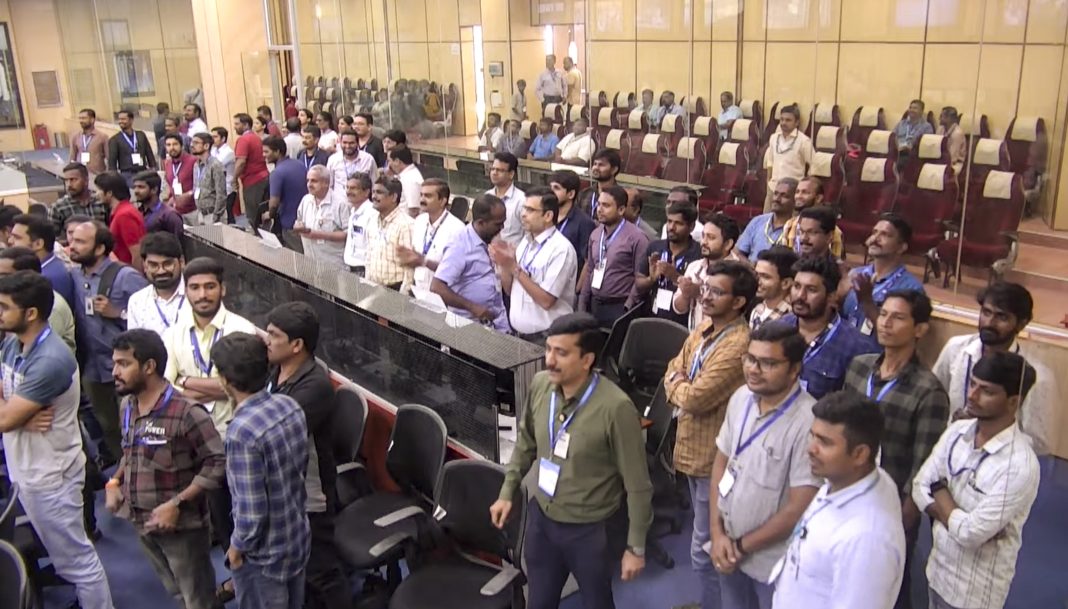Sriharikota, (Andhra Pradesh), Dec 5: The ISRO on Thursday successfully launched the PSLV-C59 rocket with the European Space Agency’s Proba-3 satellites from here, in a first-of-its-kind initiative involving precision formation flying of two satellites.
“Mission Success! The PSLV-C59/PROBA-3 Mission has successfully achieved its launch objectives, deploying ESA’s satellites into their designated orbit with precision,” ISRO said in a post on X.
Addressing the scientists at the Mission Control Centre after the launch, ISRO Chairman S Somnath said the two satellites were placed into the ‘right orbit’ around 18 minutes after the lift-off.
The Proba-3 (Project for Onboard Autonomy) mission consists of twin satellites in which two spacecraft (placed inside the satellites) would fly together as one, maintaining a precise formation down to a single milli-metre to study the Sun’s outer atmosphere.
For ISRO, this launch would provide key insights on taking up scientific experiments on the Sun after its maiden mission–Aditya-L1, which was successfully launched in September 2023. The European Space Agency (ESA) said, with Proba-3, the mission would be able to create “solar eclipses on demand.”
The launch, which took place at 4.04 pm from the Sriharikota spaceport in Andhra Pradesh, was postponed by 24 hours after an “anomaly” was detected in the satellite propulsion system minutes before the lift-off on Wednesday.
Congratulating ISRO, ESA Director General Josef Aschbacher said: “Thank you to ISRO for giving Proba 3 a superb boost to space! The latest member of ESA’s family of in-orbit demonstration missions, Proba-3 comprises two spacecraft launched together which, once safely in orbit, will separate to begin performing precise formation flying.”
“Almost instantaneously after separation, Yatharagga station in Australia started to receive the spacecraft’s signal. Telemetry is flowing to ESA’s mission control centre in Belgium! Go Proba, go!” He posted on X.
Somanath said, “The satellites have been placed in the right orbit which is a very high elliptical orbit of almost 600 km perigee, that is the closest point to the Earth and 60,000 km at its apogee, that is the farthest point with an inclination of 59 degrees.”
“It (The mission) has been precisely achieved in the 61st mission (of Polar Satellite Launch Vehicle). So, congratulations to the entire PSLV project team as well as the Proba-3 team. We wish all the very best to the Proba-3 team for their further operations and in achieving the mission goals,” he said.
In a series of posts on X, ISRO said: “Celebrating success! The PSLV-C59-Proba-3 mission reflects the dedication of NSIL, ISRO and ESA teams. This achievement highlights India’s critical role in enabling global space innovation. Together we continue building bridges in international space collaboration.”
NewSpace India Ltd (NSIL), the commercial arm of ISRO has bagged the order from ESA for the launch.
“The PSLV-C59/PROBA-3 Mission has successfully achieved its launch objectives, deploying ESA’s satellites into their designated orbit with precision. A testament to the trusted performance of PSLV, the collaboration of NSIL and ISRO and ESA’s innovative goals,” ISRO added.
The mission objective of PSLV-C59 is to demonstrate precise formation flying and the two spacecraft inside the satellites–Coronagraph (310 kg) and Occulter (240 kg) would be launched together in a stacked configuration after the desired orbit level is reached in the coming days. They would be later positioned at the desired orbit by the scientists of ESA in Belgium.
At the end of the revised countdown which commenced at about 8.05 am on Thursday, the 44.5 metre tall PSLV-C59 rocket on its 61st flight and the 26th with PSLV-XL variant lifted off at the prefixed 4.04 pm from this spaceport here.
The satellites, as planned, reached the high earth elliptical orbit and would fly 150 metre apart (as one large satellite structure) in tandem so that the ‘Occulter’ spacecraft would block out the solar disk of the sun, enabling ‘Coronagraph’ to study the Sun’s corona or the surrounding atmosphere, for scientific observation.
The ‘Occulter’ spacecraft would line up in front of the other, around 150 metres away, to cast its shadow precisely onto the other. The shade provided by the first spacecraft (Occulter) would cover the fiery face of the Sun so that its faint surrounding ‘Coronal’ atmosphere becomes visible.
According to the ESA, the corona is much hotter than the Sun itself and it is where space weather originates. It is also a topic of widespread scientific and practical interest. (PTI)




